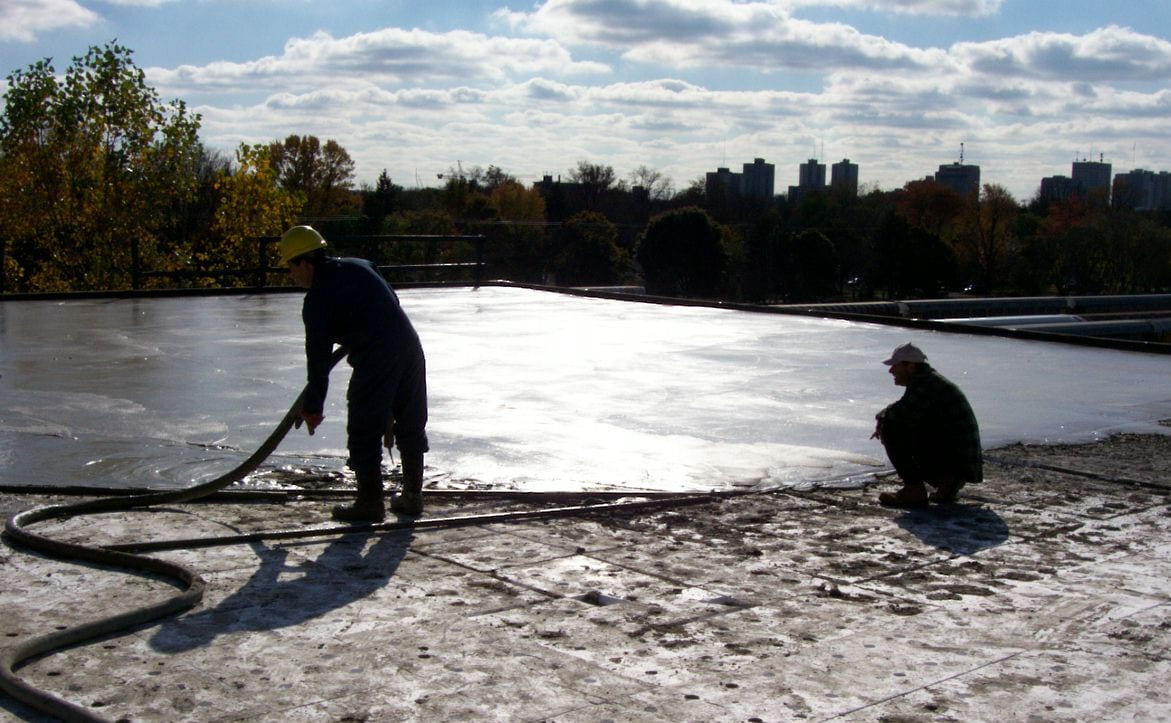Lightweight Insulating Concrete (LWIC) is a favored material in roofing applications due to its thermal insulation value and potential reusability. However, managing moisture effectively during the installation phase is critical, especially when LWIC is exposed to rain.
Aggregate-based LWIC consists of Portland cement, vermiculite, and water. Vermiculite, a key component, naturally absorbs water when exposed to moisture. This property helps slow down the drying process of aggregate-based LWIC and helps prevent shrinkage cracks. During rain events, vermiculite will also absorb the incoming water, which slows the rate at which moisture migrates through the concrete matrix.
Cellular-based LWIC incorporates cellular foam into the Portland cement and water mixture, creating air bubbles within the mix. The air bubbles reduce the density of the concrete but also increase its porosity. While cellular-based LWIC is effective for thermal insulation, the increased porosity allows mix water to evaporate and rain water to penetrate more rapidly. This can result in quicker moisture migration through the concrete matrix and faster curing.
To manage moisture exposure effectively in cellular-based LWIC, the use of sealers is an option, but only if the roof system is mechanically fastened to the LWIC. Sealers used on LWIC may affect adhesion of subsequent roofing products. Sealers act as a barrier, helping to minimize rainwater absorption into the LWIC.
Areas of exposed LWIC may be covered with a protective layer of plastic in lieu of a sealer to minimize rainwater absorption assuming the LWIC is ready to accept foot traffic. Plastic should only be used as a temporary measure and should be removed immediately after the rain event is over.
To read the full white paper, click the link below.


